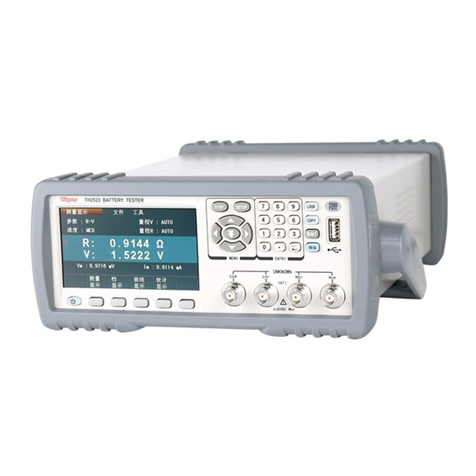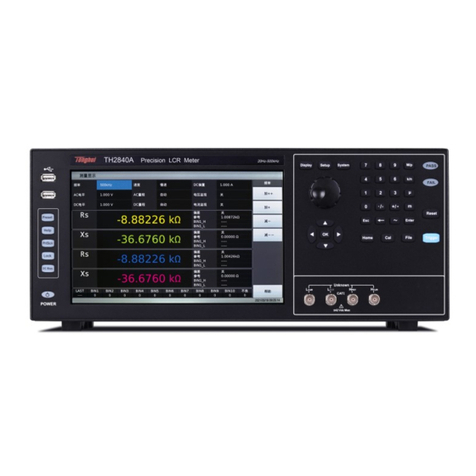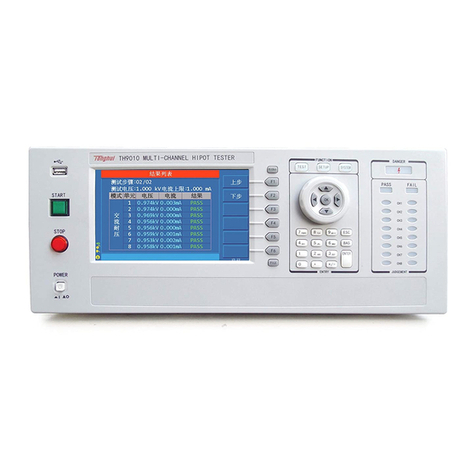
TH2883 Series Operation Manual
3
5.2.5 Test Imp- can be set in TEST mode....................................................................... 5-3
5.2.6 Erase Imp- can be set in TEST mode..................................................................... 5-3
5.2.7 Volt ADJ- can be set in TEST mode....................................................................... 5-4
5.2.8 Start Volt- can be set in BDV test mode................................................................. 5-4
5.2.9 End Volt- can be set in BDV test mode.................................................................. 5-4
5.2.10 Volt Step- can be set in BDV test mode............................................................... 5-4
5.2.11 Comparator...........................................................................................................5-5
5.2.12 Position (AREASIZE, DIFF ZONE, PHASE DIFF) ..........................................5-5
5.2.13 Position(PHASE DIFF)..................................................................................5-5
5.2.14 DIFF(Limit)( AREA SIZE, DIFF ZONE, PHASE DIFF)............................5-6
5.2.15 DIFF(Limit)( CORONA)............................................................................. 5-6
5.3 Match Setup...................................................................................................................... 5-6
5.3.1 Step ........................................................................................................................ 5-7
5.3.2 Mode...................................................................................................................... 5-8
5.3.3 Std.Name-available in Sample mode..................................................................... 5-9
5.3.4 Step NO.-available in SW.Copy.............................................................................5-9
5.4 Int. File............................................................................................................................. 5-9
5.5 Ext. File.......................................................................................................................... 5-11
Chapter 6 Introduction to [SYSTEM]............................................................................................. 6-1
6.1 System.............................................................................................................................. 6-1
6.1.1 Brightness .............................................................................................................. 6-2
6.1.2 Pass/Fail................................................................................................................. 6-2
6.1.3 Pass Alarm ............................................................................................................. 6-2
6.1.4 Fail Alarm .............................................................................................................. 6-2
6.1.5 Key Sound..............................................................................................................6-2
6.1.6 Hard Copy.............................................................................................................. 6-2
6.1.7 Password................................................................................................................ 6-3
6.1.8 Language................................................................................................................ 6-3
6.1.9 Theme ....................................................................................................................6-3
6.1.10 Date...................................................................................................................... 6-3
6.1.11 Time ..................................................................................................................... 6-4
6.2 Parameter.......................................................................................................................... 6-4
6.2.1 Wave Disp.............................................................................................................. 6-5
6.2.2 Trig Mode .............................................................................................................. 6-5
6.2.3 Delay Time............................................................................................................. 6-6
6.3 Interface............................................................................................................................ 6-6
6.3.1 I/O.......................................................................................................................... 6-7
6.3.2 TH2883 RS232C interface..................................................................................... 6-7
6.3.3 USB interface.........................................................................................................6-9



































